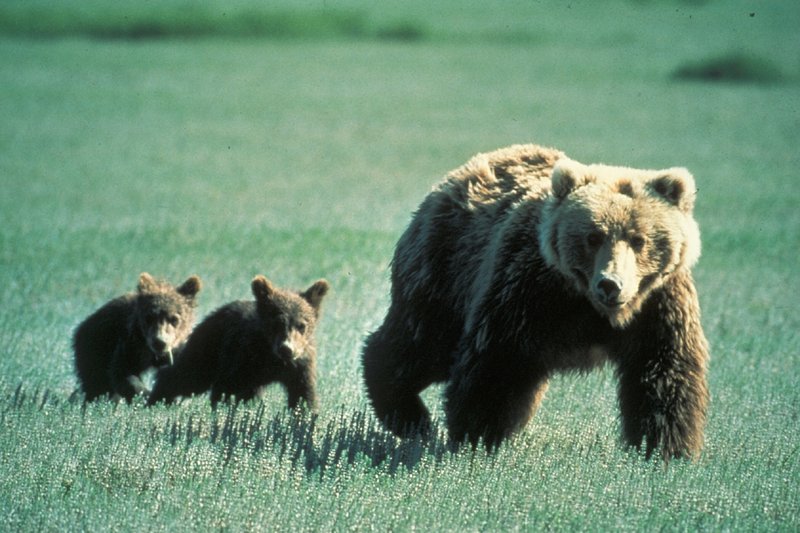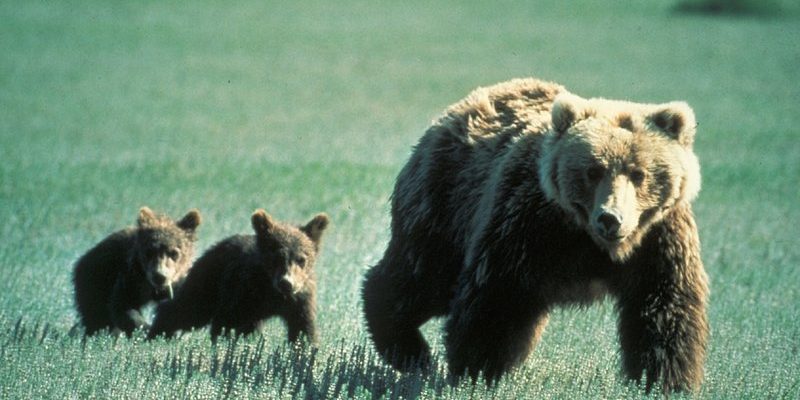
Bear Birth and The Importance of Denning
The first step in a bear’s parenting journey begins when the mother hibernates. Most bear species, like black bears and grizzly bears, look for a cozy den to give birth. Think of this as their own private nursery. A bear typically gives birth during the winter months while she’s hibernating. When the cubs are born, they are incredibly vulnerable, weighing about a pound each and covered in soft, fine fur.
Dens are crucial for keeping the cubs warm and safe during their early days. The mother doesn’t eat or drink during this time, relying on her fat reserves. This sacrifice showcases her unwavering dedication. You might be wondering how long a bear stays in the den with her babies. Generally, a mother will stay in the den for about three to four months, emerging with her cubs when spring arrives, ready to face a new world.
Nurturing and Feeding the Cubs
Once the mother bear emerges from the den, her focus shifts to nurturing and feeding her cubs. At this stage, they are still quite dependent on her. The mother provides them with rich, nutritious milk, essential for their growth. Bear milk is packed with fat, making it perfect for the rapid development of her cubs. It’s like giving them a high-energy smoothie every day!
As the cubs grow, they start to explore solid food. The mother introduces them to berries, nuts, and even small animals, teaching them what’s safe to eat. This is where the concept of “learning through play” comes in. Cubs often engage in playful wrestling, which helps them develop essential skills for survival, like agility and coordination. Here’s the thing: this playful behavior isn’t just for fun; it’s part of their training for adulthood.
Protection and Survival Instincts
Bear mothers are ferociously protective of their young. If they sense danger, they won’t hesitate to defend their cubs, often putting themselves at risk. For example, if another bear comes too close, the mother may growl or charge to protect her little ones. This instinct is crucial because a cub’s survival depends heavily on the mother’s ability to fend off threats.
You might think that a bear’s size alone should deter predators, but that’s not always the case. Cubs are vulnerable to not only other bears but also wolves and even big cats. The mother’s instincts and protective behavior ensure an environment in which her cubs can thrive and grow stronger.
Teaching Life Skills
Teaching life skills is vital for bears, just like it is for humans. Bear moms are patient teachers. As her cubs age, the mother guides them in important lessons about foraging and climbing trees. She might even demonstrate how to catch fish or dig for roots. This hands-on approach is critical because it prepares the cubs for life on their own.
Cubs typically remain with their mother for about two to three years. During this time, they learn everything they need to survive once they venture out on their own. It’s not just physical skills, either—cubs also learn social behaviors by watching and mimicking their mother. They grasp what it means to be a bear in their environment.
Independence and Dispersal
Eventually, the day comes when the cubs must set out on their own. This doesn’t happen overnight; it’s a gradual process. The mother will encourage independence, letting her cubs venture further while keeping a watchful eye. It’s a bittersweet moment, much like when a parent sees their child head off to college.
Cubs often leave their mother in late spring or early summer when food sources are abundant. At this point, they’ve gained enough skills to survive independently. They’ll start to carve out their own territory and continue the cycle of life. This transition is a testament to the hard work and dedication of bear mothers.
Challenges and Human Impacts
While bear parenting has its beauty, it faces numerous challenges, especially with human impacts on the environment. Habitat loss, climate change, and hunting can disrupt the natural behaviors of bears. It raises a significant question: how can we coexist with these magnificent creatures while protecting their natural habitats?
Conservation efforts play a huge role here. By protecting the environments where bears roam, we help ensure that mothers can raise their cubs as nature intended. There’s a delicate balance in nature, and maintaining it requires effort from all of us. You might wonder what you can do to help—supporting wildlife organizations or spreading awareness can go a long way.
In the wild, how bears raise their young is a remarkable testament to both instinct and love. From the cozy den to teaching essential life skills, bear mothers exhibit a combination of nurturing and toughness that’s awe-inspiring. As we marvel at these incredible animals, let’s also commit to protecting their habitats and supporting conservation efforts.
Bears are not just symbols of strength; they’re also devoted parents. Whether you see a bear in the wild or learn more about them through documentaries, keep in mind the journey they undertake to raise their young. Understanding their world helps us appreciate the intricate tapestry of life that connects us all.

